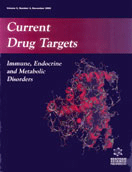Abstract
At least one third of the bile flow is driven osmotically by the amount of hepatic glutathione excreted into canalicular spaces. Beyond the importance of this secretory mechanism for bile formation, the excretion of glutathione is an important way to discharge toxic anionic compounds deriving from liver metabolism of exogenous and endogenous substances. Thus, biliary secretion of glutathione and its conjugates really works as a major detoxification system for the hepatocytes. Derangement of hepatic and/or biliary glutathione status can occur in several experimental animal models of liver injury and in human diseases. In the present review, we will focus on mechanisms of bile glutathione efflux and changes associated with cholestatic conditions. Novel findings on the role of water channels and of the multidrug resistant proteins in bile salt-independent bile formation, will also be discussed. New routes of intervention to modify bile flow for therapeutic purposes are considered.
Keywords: bile flow, bile formation, canalicular bile, cholestasis, glutathione, glutathione s-conjugates, multidrug resistant proteins, oxidative stress
 1
1


















